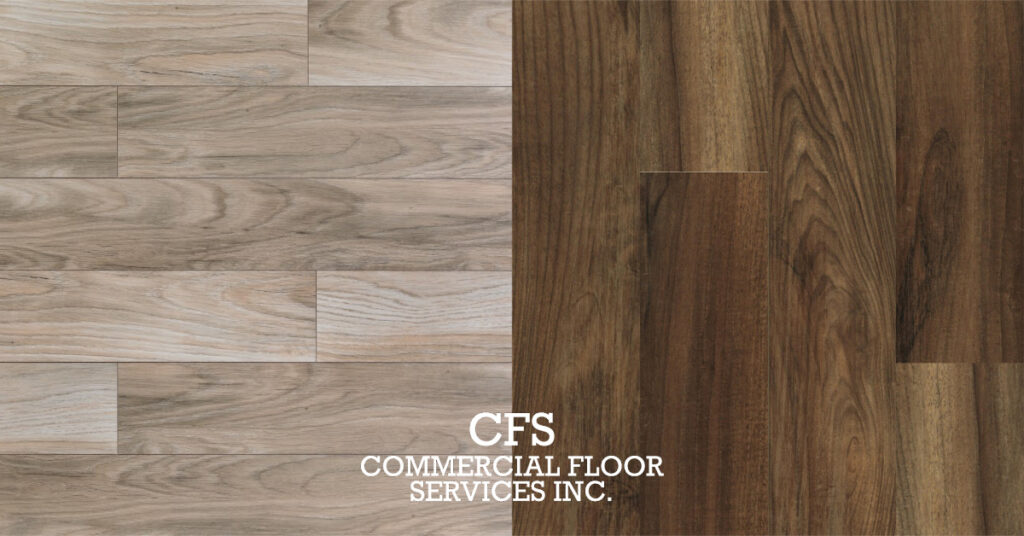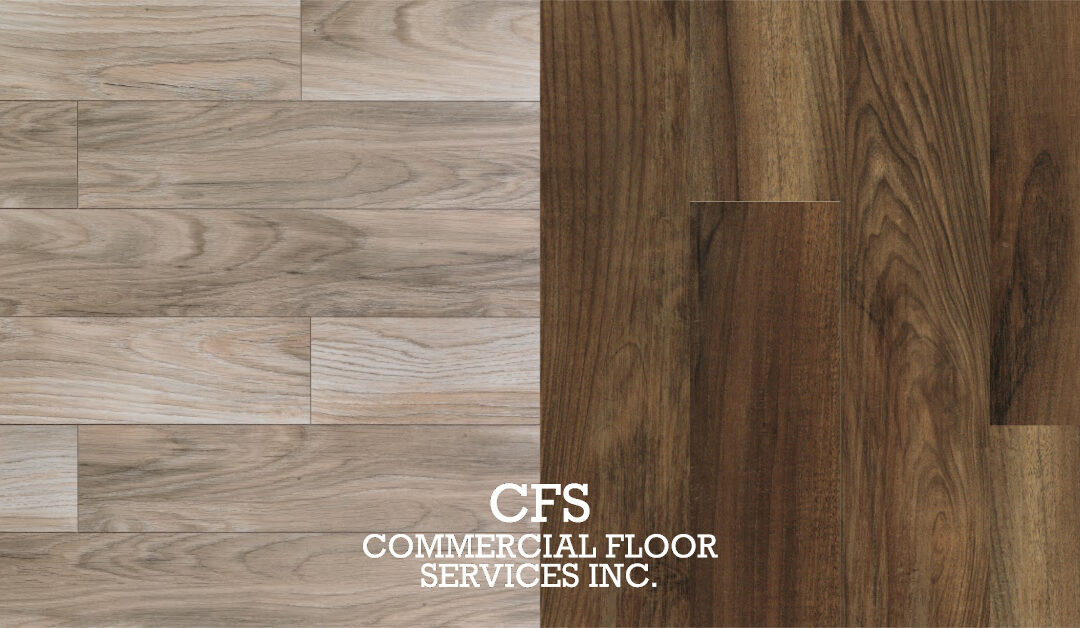Laminate VS Engineered A Wood Flooring Comparison Guide
Are you considering replacing your new home’s flooring with a variety of options? This is a time-consuming and difficult task. If you’ve done your research and are still confused about the fundamental differences between laminate and engineered hardwood flooring, you’re not alone. There has always been a debate about which of these two options to select. Fortunately, there are numerous distinctions between the two that can help narrow it down. Commercial Floor Services is here to help you compare laminate and engineered hardwood flooring.
Appearance
Laminate
Laminate flooring is a synthetic floor that has the appearance and feel of solid hardwood flooring. It is a completely man-made material made up of many overlapping layers. The base layer acts as a solid backbone, usually made of fiberboard, and helps to stabilize the entire structure. This piece protects the subfloor from water and moisture damage. The top layer is then bonded with a realistic photographic image layer to give the appearance of hardwood flooring. A transparent wear layer is typically applied at the end to protect the surface. Laminate now has a richer, deeper mold of simulated wood grain textures, which makes it more appealing to buyers.
Engineered
If you are going for a more realistic hardwood floor look, engineered hardwood flooring is more convincing. Engineered hardwood flooring is a type of natural wood flooring with a backing layer for stability and protection. This enables the application of a relatively thin layer of plywood or high-density fiberboard core on top of the floor. Plywood or fiberboard gives stability without costing an extortionate amount. Finally, a veneer of real solid wood is applied to the top layer to complete the look. This gives the floor good dimensional stability, and the real hardwood gives it a more authentic appearance than other options.
Water Resistance and Moisture
Laminate
While some laminate products claim to be water-resistant, this flooring option may not always hold up to water damage. If any moisture seeps through the cracks, this type of material can be seriously harmed. Because of its imperviousness to water, the plastic surface level allows for some wiggle room if swept up quickly. If the water is left there for an extended period of time, it may seep through the cracks and cause damage to the fiberboard. Laminate isn’t the ideal flooring choice for homes with a lot of humidity. Moisture can seep into the plywood or fiberboard through the cracks in the flooring, causing mold to grow.
Engineered
The surface of most engineered hardwood floors is protected from damage by a tough waterproof sealer. If the water gets to the bottom levels of the plywood or veneer, the liquid might cause it to swell and warp. Due to the cracks that can absorb moisture and welt the boards, they are not the ideal flooring solutions for humidity. Even if the surface is well-sealed, gaps between engineered wood can enable moisture to infiltrate the plywood, ruining it altogether.
Durability and Maintenance
Laminate
Durability and maintenance are important elements to consider when selecting flooring for your home or property. Because of the plastic covering on top, laminate is usually easy to maintain. This makes cleaning a breeze immediately on the spot. The most significant disadvantage of laminate flooring is the difficulty in repairing it after it has been severely damaged. Laminate cannot be refinished; if it is damaged, it must be fully removed and replaced. On the other hand, laminate flooring can prevent scratches and dents from everyday activities.
Engineered
Engineered flooring is more durable than most laminate options. If there is damage to the floor, engineered hardwood can be sanded and refinished at least once. If you have placed a thick veneer layer on your floors, it may be sanded and refinished up to three times in certain situations. It is very susceptible to scratches, fading, and stains. While it may take more effort to protect your engineered wood floors, they tend to last longer than typical laminate flooring.
Installation and Lifespan
Laminate
The simplicity of installation has a significant influence on decisions. Laminate flooring is less expensive and simpler to install than engineered flooring. To install this flooring option, a floating technique is used. This involves interlocking the edges of each plank designed to float over a layer of foam underlayment laid over the subfloor. Because it is one of the simplest flooring materials to install, many homeowners prefer to do it themselves. There are several colors and styles to select from, allowing homeowners to create their own look. Laminate flooring generally lasts 10 to 20 years, so you will almost certainly need to replace it.
Engineered
Engineered hardwood flooring, on the other hand, is far more complex to install than laminate flooring. It is also one of the more expensive flooring costs. When installed over concrete flooring, several of these floating hardwood floors can be glued down. Due to the complexity and accuracy, expert installation is usually required. Finish nails are used to secure the flooring to the subfloor. They must be pushed at an angle through the tongues on the board’s edges. With expert assistance or proper installation, this flooring style can last for up to 30 years and more.
All of this may seem like a lot, but we are here to help. Contact Commercial Floor Services in Durango, Colorado today and we can get your flooring taken care of. 970-259-1054


